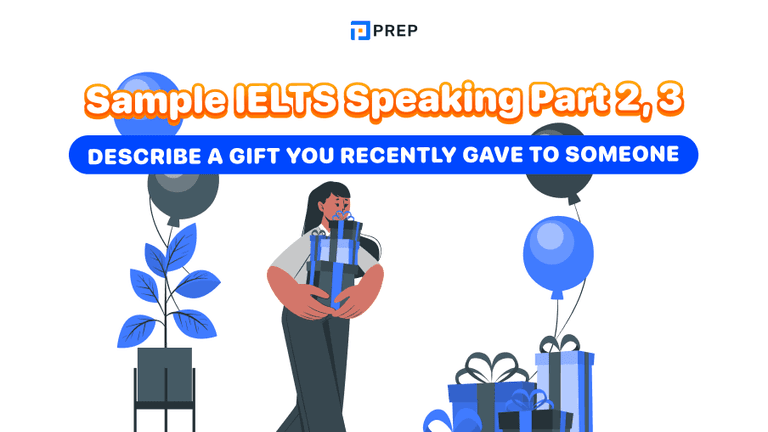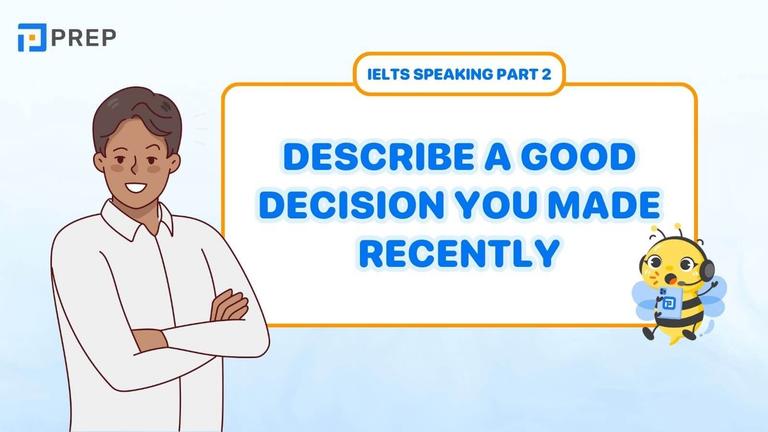Cleft Sentences: Emphasize Your English Like a Pro!
A cleft sentence is a type of sentence that emphasizes a particular part of the statement and is commonly used in both communication and writing. So, when is a cleft sentence used, and what is its specific structure? In today's article, PREP will help you explore in detail the knowledge about cleft sentence structures along with specific illustrative examples!

I. What are cleft sentences?
1. Cleft Sentence Definition: Explained Simply
Cleft sentences are a type of sentence commonly used to emphasize a specific component within the sentence, such as the subject, object, adverb, or any noteworthy event or entity in the sentence. A cleft sentence is also a compound sentence consisting of a main clause and a subordinate clause, often combined with relative pronouns.
Examples of cleft sentences:
-
It is John who wrote this letter.
-
It was my wallet that I lost yesterday.
-
It was at the birthday party that I met Lisa.
2. Why Use Them? The Power of Emphasis
Mastering cleft sentences provides three fundamental communication advantages. First, you can highlight new, surprising, or contradictory information effectively—when someone assumes John completed the project, you respond with "It was actually Mary who finished it."
Second, cleft sentences excel at creating contrast and correction. If colleagues debate meeting times, you can state "It's on Thursday that we're meeting," eliminating confusion while emphasizing correct information.
Third, these cleft sentence structures guide your audience's focus efficiently, ensuring they process information in your intended sequence and priority. This creates clear information hierarchy, making communication more memorable and persuasive.
II. Main Cleft Sentence Types
1. Cleft Sentence Structure using "It + be"
The cleft sentence structure using "It + be" is the most commonly used form for emphasis in English. Here is the general formula for this type of cleft sentence:
It is/was + Emphasized component + that/whom/who +…
Due to the nature of the component being emphasized in the cleft sentence structure, which can be the subject, object, adverb, or any noteworthy action or event, cleft sentences in English can also be classified into various types. Let's analyze each commonly used cleft sentence structure below:
|
Cleft sentence |
Structure |
Example |
|
To emphasize the subject
|
|
|
|
To emphasize the object
|
|
|
|
To emphasize the adverbial |
|
|
|
Passive cleft sentence |
|
|
2. Cleft Sentence Structure Emphasizing "What"
Unlike the "It + be" structure, this type of cleft sentence is special because the information that needs to be emphasized is usually placed at the end. The "what" clause is placed at the beginning of the sentence, and in some other cases, relative pronouns like "where," "why," or "how" may also be used. Due to these unique characteristics regarding word position, the formation of cleft sentences emphasizing "what" differs in several ways.
Structure: What clause + V + is/was + information to be emphasized
For example:
-
What really surprised me was my boyfriend's kindness.
-
What I need now is a good rest.
3. It-Clefts vs. Wh-Clefts: Quick Guide
|
Aspect |
It-Clefts |
Wh-Clefts |
|
Best For |
Specific, discrete elements (people, objects, times, locations) |
Actions, processes, abstract concepts |
|
Tone |
Sharp, definitive emphasis |
Conversational, explanatory |
|
Use When |
Making corrections, clarifications, detailed explanations |
Defining, describing, elaborating on complex ideas |
|
Example |
"It was John who called" |
"What John did was call" |
4. Some Other Common Cleft Sentence Structures
In addition to the frequently used cleft sentence structures mentioned above, in English, we can also encounter other advanced cleft sentence formulas such as the following:
|
Cleft Sentences
|
Structure |
Example |
|
Inverted "wh" |
Subject + verb + "wh" + information to be emphasized
|
|
|
“All” |
All + subject + verb + information to be emphasized
|
|
|
“There” |
There + information to be emphasized
|
|
|
“If” |
If + clause + it’s + main clause to be emphasized
|
|
III. Avoid These Common Cleft Sentence Mistakes!
1. Wrong Connector Word
Students often confuse relative pronouns in it-cleft constructions, leading to grammatically incorrect cleft sentences.
Mistake: "It was the restaurant that we met at." Correct: "It was the restaurant where we met" or "It was at the restaurant that we met."
Use "who" for people, "where" for locations, "when" for time expressions, and "that" for objects or general concepts.
2. Missing or Wrong Second Verb
Many learners struggle with verb placement in cleft sentence constructions, particularly in the relative clause.
Mistake: "It was yesterday that the package arrive." Correct: "It was yesterday that the package arrived."
For wh-clefts: Mistake: "What he did was ran quickly." Correct: "What he did was run quickly." The verb after "be" typically takes the base form.
3. Subject-Verb Agreement Slips
Multiple verbs in different clauses create agreement challenges, with students confusing which subject governs which verb in cleft sentences.
Mistake: "What the students wants is better grades." Correct: "What the students want is better grades." The verb "want" must agree with "students" (plural).
The main "be" verb must agree with the emphasized element: Mistake: "What he needs are more time." Correct: "What he needs is more time."
4. Wh-Clauses Sounding Like Questions
A common error involves using question word order within wh-clauses, making them sound like indirect questions rather than proper cleft sentences.
Mistake: "What did he buy was expensive jewelry." Correct: "What he bought was expensive jewelry."
Wh-clauses follow statement word order (subject + verb), not question order, even though they begin with question words.
5. Overusing Clefts
Excessive use creates unnatural, overly complex prose that sounds forced rather than communicative.
Reserve cleft sentences for moments requiring genuine emphasis—corrections, clarifications, contrasts, or highlighting crucial information. Strategic deployment ensures maximum impact without overwhelming your audience.
IV. Cleft Sentence Exercises with Answers
After learning the theory behind cleft sentence structures in English, let's apply the knowledge by solving the small exercises below:
Exercise 1: Rewrite the sentences using cleft structures
-
Crystal was most glad with the service of this agency.
➡ What _______________________ (to be glad with)
-
Jack can’t stand the sound of drilling.
➡ It’s _______________________ (the sound of drilling)
-
Jenny didn’t pay for the meal, Martin did.
➡ It _______________________ (Jenny)
-
Stephen’s always late for work. It really annoys his boss.
➡ What _______________________ (to annoy)
-
I found the comic I had been searching for at the old room.
➡ It _______________________ (where)
Exercise 2: Fill in the blanks with who, that, or whom
-
It is Mike _____ plays the ukulele very well.
-
It is Bob _____ Tom falls in love with.
-
It was in that town _____ Steven was born.
-
It was the son _____ his dad gave the whole confidential document.
-
It was their children _____ most parents are willing to lend their ear to.
Answer keys
|
Exercise 1 |
Exercise 2 |
|
|
This comprehensive overview of cleft sentence structures in English was compiled by PREP for you. Be sure to practice more cleft sentence exercises with answers to become more fluent in using these cleft sentence structures in tests and everyday communication! Understanding what is a cleft sentence and mastering these cleft sentences will significantly improve your English communication skills.RetryClaude can make mistakes. Please double-check responses.

Hi I'm Chloe, and I am currently serving as an Product Content Administrator at Prep Education. With over five years of experience in independent online IELTS study and exam preparation, I am confident in my ability to support learners in achieving their highest possible scores.
Comment
Premium content
View allPersonalized roadmap
Most read












